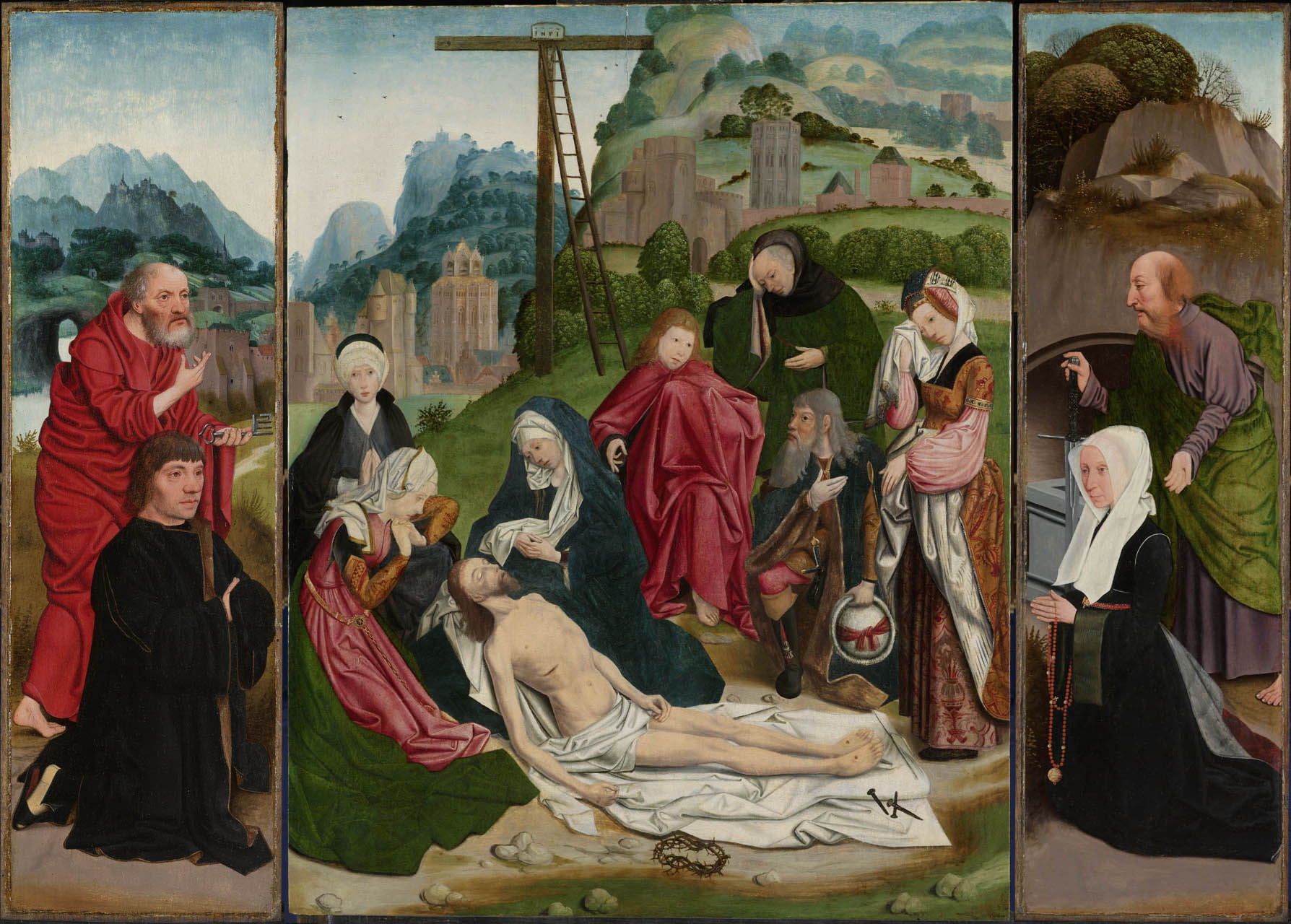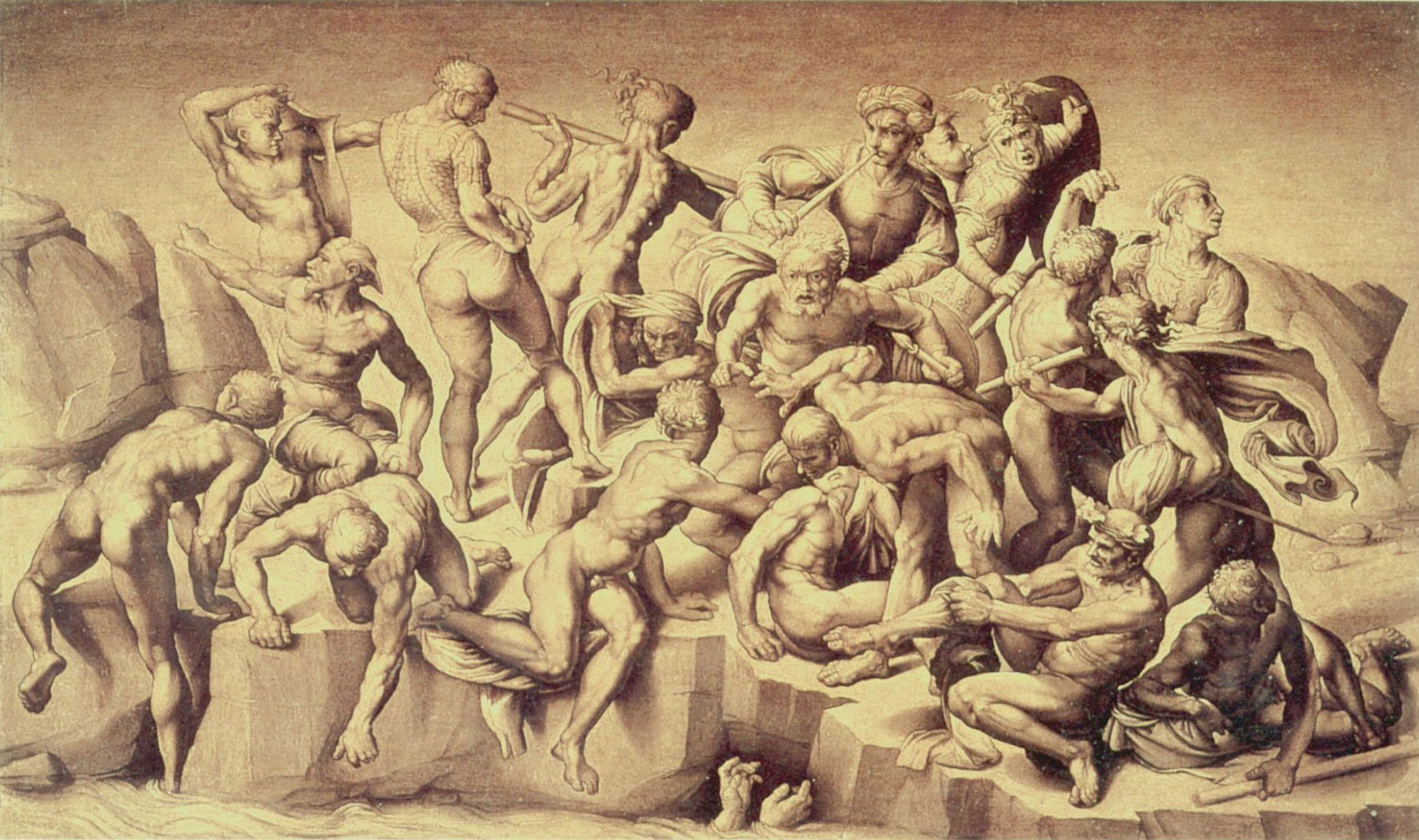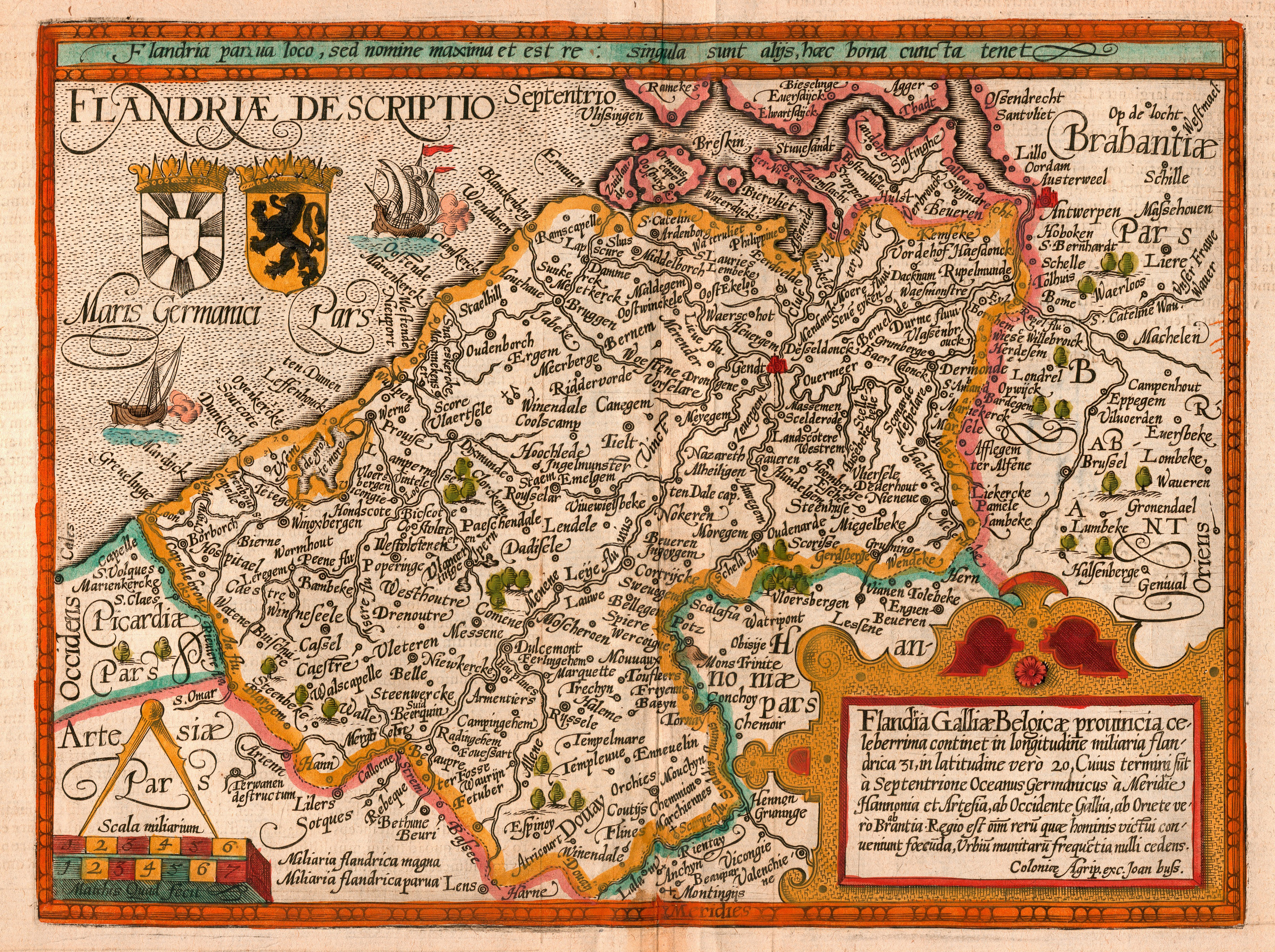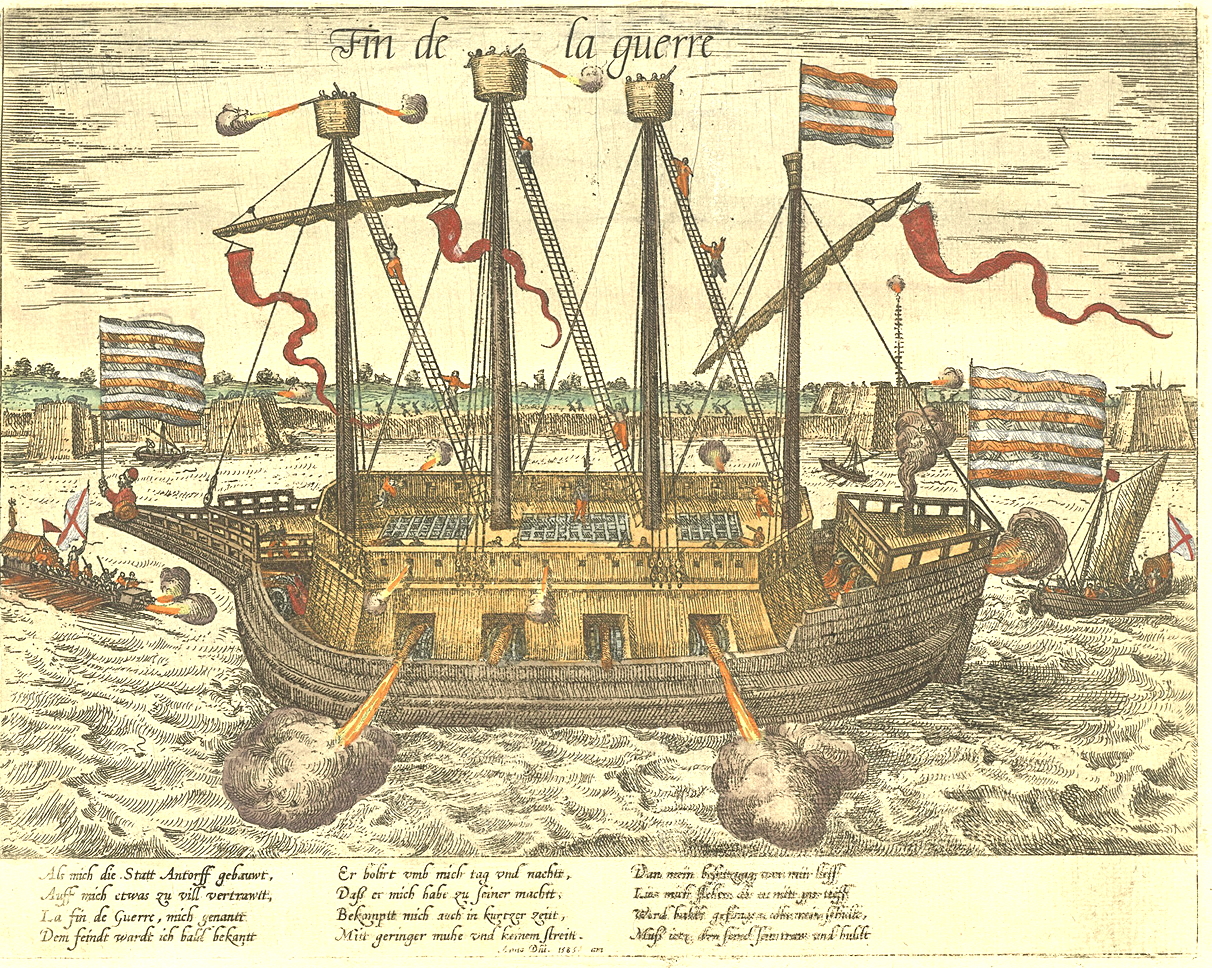|
Franz Hals
Frans Hals the Elder (, ; ; – 26 August 1666) was a Dutch Golden Age painter. He lived and worked in Haarlem, a city in which the local authority of the day frowned on religious painting in places of worship but citizens liked to decorate their homes with works of art. Hals was highly sought after by wealthy burgher commissioners of individual, married-couple, family, and institutional-group portraits. He also painted tronies for the general market. There were two quite distinct schools of portraiture in 17th-century Haarlem: the neat (represented, for example, by Verspronck); and a looser, more painterly style at which Frans Hals excelled. Some of Hals's portrait work is characterised by a subdued palette, reflecting the politely serious tones of his fashionable clients' wardrobe. In contrast, the personalities he paints are full of life, typically with a friendly glint in the eye or the glimmer of a smile on the lips. Hals was born at Antwerp in the Spanish-occupied souther ... [...More Info...] [...Related Items...] OR: [Wikipedia] [Google] [Baidu] |
Self-portrait
Self-portraits are Portrait painting, portraits artists make of themselves. Although self-portraits have been made since the earliest times, the practice of self-portraiture only gaining momentum in the Early Renaissance in the mid-15th century that artists can be frequently identified depicting themselves as either the main subject, or as important characters in their work. With better and cheaper mirrors, and the advent of the panel painting, panel portrait, many painters, sculptors and printmakers tried some form of self-portraiture. ''Portrait of a Man in a Turban'' by Jan van Eyck of 1433 may well be the earliest known panel self-portrait. He painted a separate portrait of his wife, and he belonged to the social group that had begun to commission portraits, already more common among wealthy Netherlanders than south of the Alps. The genre is venerable, but not until the Renaissance, with increased wealth and interest in the individual as a subject, did it become truly popular. ... [...More Info...] [...Related Items...] OR: [Wikipedia] [Google] [Baidu] |
Verspronck
Johannes Cornelisz Verspronck (between 1600 and 1603 – buried 30 June 1662) was a Dutch Golden Age portrait painter from Haarlem. Life Johannes Cornelisz Verspronck was born between 1600 and 1603 in Haarlem as the son of the painter Cornelis Engelsz from Gouda, who taught him to paint. In 1632 he became a member of the Haarlem Guild of St. Luke and started a successful career as a portraitist of mostly Catholic sitters in Haarlem. He may have been a Frans Hals pupil, and was strongly influenced by him, especially in his natural expressions and relaxed poses. He is best known for his exactness in painting details such as jewelry and lace, which made him quite popular with female sitters. Most notably, he won a lucrative commission in 1642 for a group portrait of the regentesses of the Heilige Geesthuis, at the time one of the wealthiest charity institutions in Haarlem, situated on the Krocht. This was won at the expense of Frans Hals himself, who had painted the regents of t ... [...More Info...] [...Related Items...] OR: [Wikipedia] [Google] [Baidu] |
Janskerk (Haarlem)
The Janskerk or St. John's Church is a former church in the Dutch city of Haarlem. Today it houses the North Holland Archives (''Noord-Hollands archief''). History Gerard van Tetrode donated land in 1310 in the centre of Haarlem to build St. John's monastery. Later the St. Barbara gasthuis was founded in 1435 by the Hugo van Assendelft, priest of the St. John's monastery, on the south side of this area. The monastery's church and the old Gasthuis doorway are the only parts of the large complex that still exist today. It was a commandry of the Knights of Saint John and is the oldest church in Haarlem after the St. Bavochurch. The order of St. John was disbanded after the Protestant Reformation and the church reverted to the state in 1625. The Haarlem council sold most of the monastery's land, and much of the art during the following years, which added considerably to the wealth of the city. In 1936 it became the location of the Haarlem Archives, and it is now the location for th ... [...More Info...] [...Related Items...] OR: [Wikipedia] [Google] [Baidu] |
Jan Mostaert
Jan Mostaert (c. 1475 – 1552/1553) was a Dutch Renaissance painter who is known mainly for his religious subjects and portraits. One of his most famous creations was the ''Landscape with an Episode from the Conquest of America''. There are very few details about the life of Jan Mostaert that are known with any certainty. The traditional account of his life was based on the biography written by the 16th century Flemish artist and art historian Karel van Mander and included in his '' Schilder-boeck'', published in Haarlem in 1604. Modern scholarship questions many of the assertions about the life of Mostaert made by Karel van Mander. One of these is van Mander's assertion that he was appointed 'painctre aux honneurs' ("painter with honors") by Margaret of Austria, the governor of the Habsburg Netherlands; it does not seem that he became Margaret's court painter, [...More Info...] [...Related Items...] OR: [Wikipedia] [Google] [Baidu] |
Jan Van Scorel
Jan van Scorel (1 August 1495 – 6 December 1562) was a Dutch painter, who played a leading role in introducing aspects of Italian Renaissance painting into Dutch and Flemish Renaissance painting. He was one of the early painters of the Romanism (painting), Romanist style who had spent a number of years in Italy, where he thoroughly absorbed the Italian style of painting. His trip to Italy coincided with the brief reign of the only Dutch pope in history, Pope Adrian VI, Adrian VI in 1522–23. The pope made him a court painter and superintendent of his collection of antiquities. His stay in Italy lasted from 1518 to 1524 and he also visited Nuremberg, Venice and Jerusalem. Venetian art had an important impact on the development of his style. He differed from most Romanists in that he was a native of the northern Netherlands and not of Flanders and that he remained most of his life in the northern Netherlands. He settled permanently in Utrecht (city), Utrecht in 1530 and est ... [...More Info...] [...Related Items...] OR: [Wikipedia] [Google] [Baidu] |
Geertgen Tot Sint Jans
Geertgen tot Sint Jans (c. 1465 – c. 1495), also known as Geertgen van Haarlem, Gerrit van Haarlem, Gerrit Gerritsz, Gheertgen, Geerrit, Gheerrit, or any other diminutive form of Gerald, was an Early Netherlandish painter from the northern Low Countries in the Holy Roman Empire. No contemporary documentation of his life has been traced, and the earliest published account of his life and work is from 1604, in Karel van Mander's '' Schilder-boeck''. According to van Mander, Geertgen was probably a pupil of Albert van Ouwater, one of the first oil painters in the northern Low Countries. Both painters lived in the city of Haarlem, where Geertgen was attached to the house of the Knights of Saint John, perhaps as a lay brother, for whom he painted an altarpiece. In van Mander's book he states that Geertgen took the name of St. John without joining the order, thus his last name "tot Sint Jans" was derived from the order's name and means "unto Saint John". Biography Though van Ma ... [...More Info...] [...Related Items...] OR: [Wikipedia] [Google] [Baidu] |
Schilderboeck
or is a book written by the Flemish writer and painter Karel van Mander first published in 1604 in Haarlem in the Dutch Republic, where van Mander resided. The book is written in 17th-century Dutch and its title is commonly translated into English as 'The Book of Painters' or 'The Book of (or on) Painting' and sometimes as 'The Book on Picturing'. consists of six parts and is considered one of the principal sources on the history of art and art theory in the 15th and 16th century Low Countries. The book was very well received and sold well. Karel van Mander died two years after its publication. A second posthumous edition, which included a brief, anonymous biography of van Mander was published in 1618. This second edition was translated by Hessel Miedema into English and published in 1994-1997 together with a facsimile of the original and five volumes of notes on the text. Summary is divided into six parts that have separate title pages and are indexed. The parts are: * The f ... [...More Info...] [...Related Items...] OR: [Wikipedia] [Google] [Baidu] |
Haarlem Guild Of Saint Luke
The Haarlem Guild of Saint Luke was first a Christian, and later a city Guild for various trades falling under the patron saints Luke the Evangelist and Saint Eligius. History During the lifetime of Geertgen tot Sint Jans, there was probably a painter's guild in Haarlem, but all records of such an organization have been lost. If one existed, it would probably have been associated with the Janskerk (Haarlem), where Geertgen was active as a respected painter. The earliest mention of the Haarlem Guild of St. Luke is from 1496, when the heirs of ''Joost Huge Alboutsdr'', who had been the former owner of the location of the altar in the Sint-Bavokerk, ceded all altar rights which up to then had been for the Ascension of the Virgin, to the ''Guild of St. Luke and St. Eligius''.''Sint Lucas Gilde te Haarlem in 1631.'' Medegedeeld door den Adj.-Archivaris van Haarlem C. J. Gonnet, 1877, North Holland Archives, Haarlem. This is possibly also the year that the Guild switched its altar fro ... [...More Info...] [...Related Items...] OR: [Wikipedia] [Google] [Baidu] |
Mannerism
Mannerism is a style in European art that emerged in the later years of the Italian High Renaissance around 1520, spreading by about 1530 and lasting until about the end of the 16th century in Italy, when the Baroque style largely replaced it. Northern Mannerism continued into the early 17th century. Mannerism encompasses a variety of approaches influenced by, and reacting to, the harmonious ideals associated with artists such as Leonardo da Vinci, Raphael, Vasari, and early Michelangelo. Where High Renaissance art emphasizes proportion, balance, and ideal beauty, Mannerism exaggerates such qualities, often resulting in compositions that are asymmetrical or unnaturally elegant. Notable for its artificial (as opposed to naturalistic) qualities, this artistic style privileges compositional tension and instability rather than the balance and clarity of earlier Renaissance painting. Mannerism in literature and music is notable for its highly florid style and intellectual sophist ... [...More Info...] [...Related Items...] OR: [Wikipedia] [Google] [Baidu] |
Karel Van Mander
Karel van Mander (I) or Carel van Mander IKarel van Mander at the Netherlands Institute for Art History (May 1548 – 2 September 1606) was a Flemish Painting, painter, playwright, poet, art historian and Aesthetics, art theoretician, who established himself in the Dutch Republic in the latter part of his life. He is mainly remembered as a biographer of Early Netherlandish painting, Early Netherlandish painters and Dutch and Flemish Renaissance painting, Northern Renaissance artists in his ''Schilder-boeck''. As an artist and art theoretician he played a significant role in the spread and development of Northern Mannerism in the Dutch Republic.Painting in the Dutch Golden Age - A Profile of the Seventeenth Century, National Gallery of Art, 2007, p. 119 Life Most of the information about Karel van Man ...[...More Info...] [...Related Items...] OR: [Wikipedia] [Google] [Baidu] |
Flemish People
Flemish people or Flemings ( ) are a Germanic peoples, Germanic ethnic group native to Flanders, Belgium, who speak Flemish Dutch. Flemish people make up the majority of Belgians, at about 60%. ''Flemish'' was historically a geographical term, as all inhabitants of the medieval County of Flanders in modern-day Belgium, France and the Netherlands were referred to as "Flemings" irrespective of their ethnicity or language. The contemporary region of Flanders comprises a part of this historical county, as well as parts of the medieval Duchy of Brabant and the medieval County of Loon, where the modern national identity and Flemish culture, culture gradually formed. History The sense of "Flemish" identity increased significantly after the Belgian Revolution. Prior to this, the term "" in the Dutch language was in first place used for the inhabitants of the former County of Flanders. Flemish, however, had been used since the 14th century to refer to the language and dialects of both ... [...More Info...] [...Related Items...] OR: [Wikipedia] [Google] [Baidu] |
Fall Of Antwerp
The fall of Antwerp ( ) on 17 August 1585 took place during the Eighty Years' War, after a siege lasting over a year from July 1584 until August 1585. The city of Antwerp was the focal point of the Protestant-dominated Dutch Revolt, but was forced to surrender to the Spanish forces under the command of Alessandro Farnese. Under the terms agreed, all the Protestants of Antwerp were given four years to settle their affairs and leave the city. Many migrated north, especially to Amsterdam. Apart from losing a high proportion of its middle class and mercantile population, Antwerp's trade suffered for two centuries afterwards as Dutch forts blockaded the River Scheldt until 1795. Background At the time Antwerp, in modern Belgium, was not only the largest Dutch city, but was also the cultural, economic, and financial centre of the Seventeen Provinces and of Northwestern Europe. On 4 November 1576, unpaid Spanish soldiery mutinied: they plundered and burnt the city during what was ca ... [...More Info...] [...Related Items...] OR: [Wikipedia] [Google] [Baidu] |









